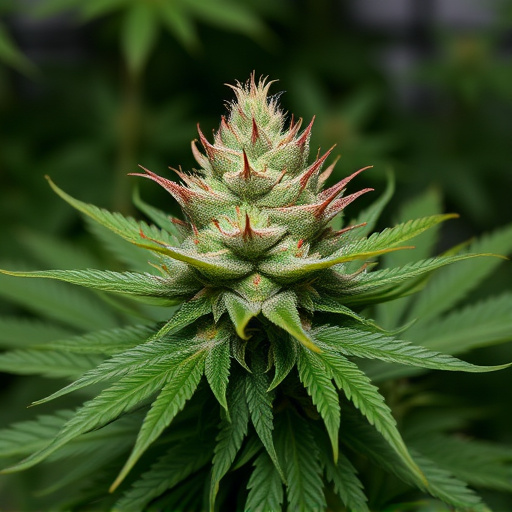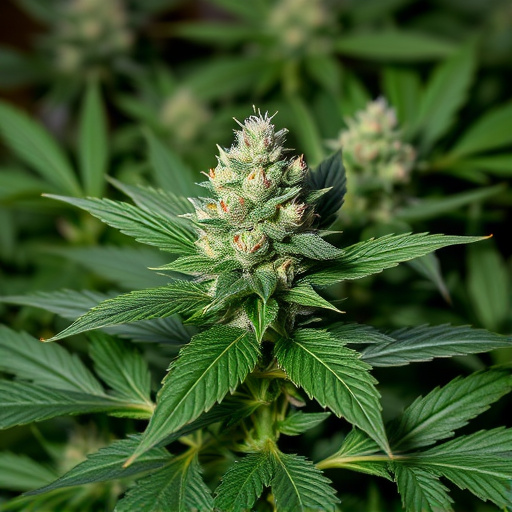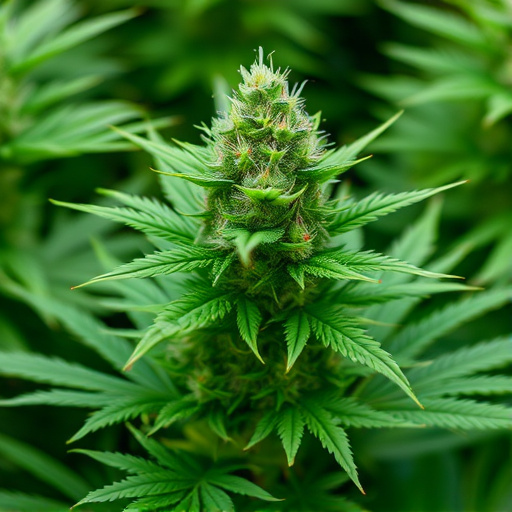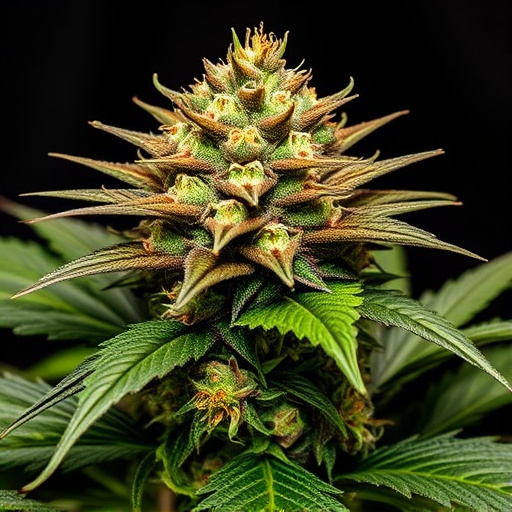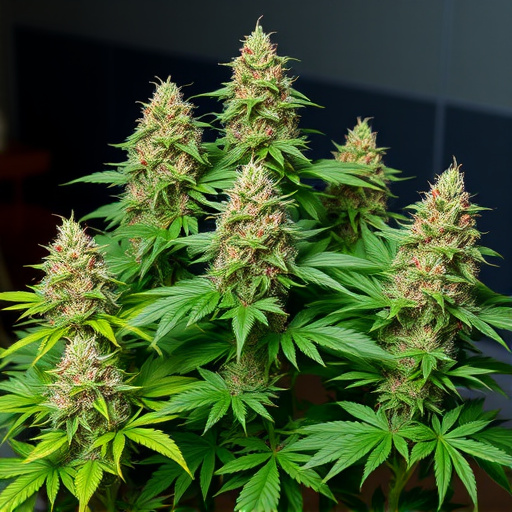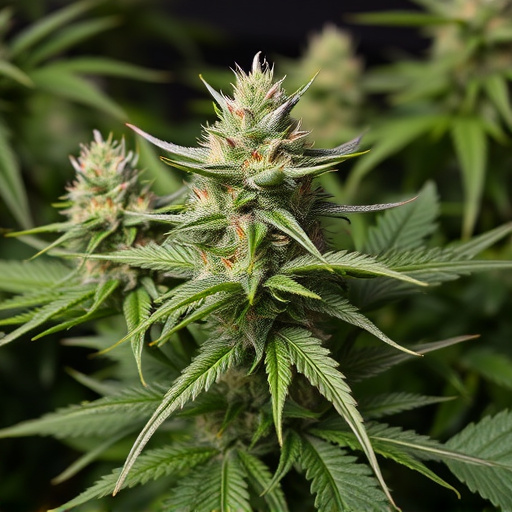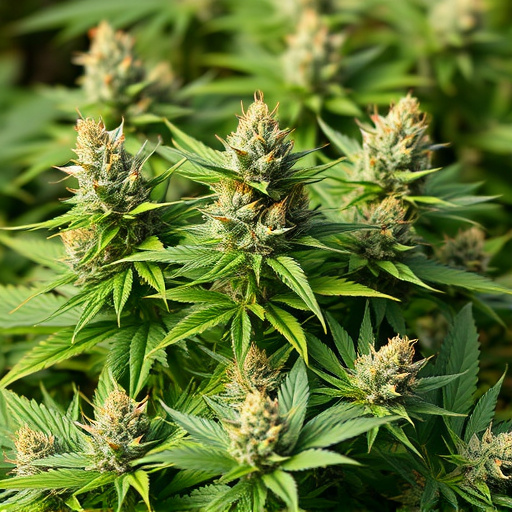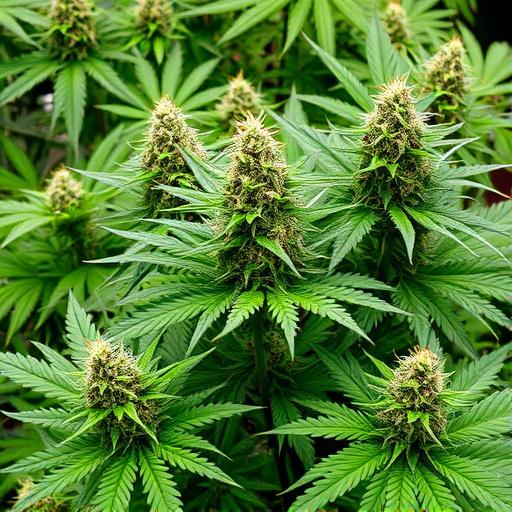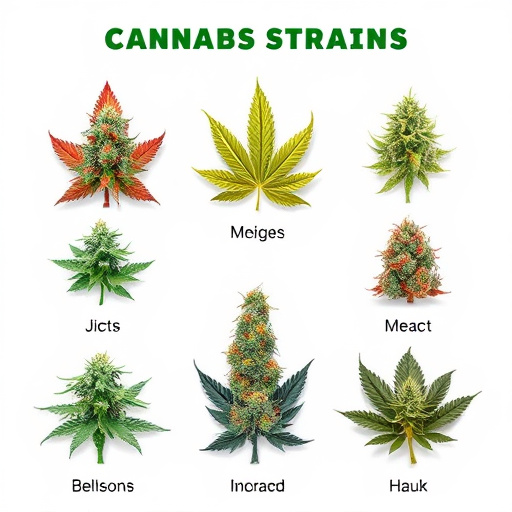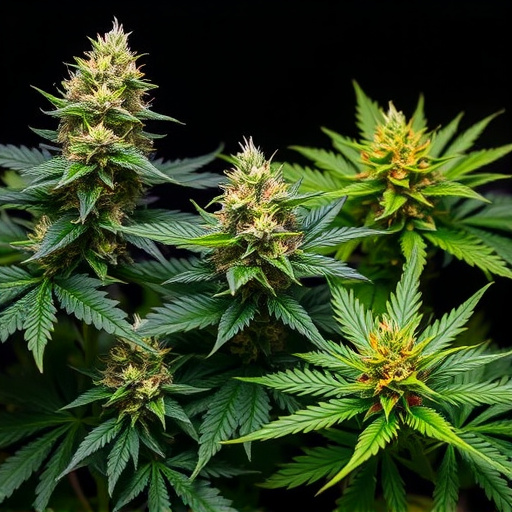Cannabis strains, differing in THC and CBD levels, impact appetite through interactions with the endocannabinoid system. High-THC strains generally stimulate appetite more due to its CB1 receptor binding, while CBD may suppress it. Balanced ratios offer moderate effects. Scientific interest grows in cannabis' effect on eating behavior, with various cannabinoids and terpenes contributing to differing hunger responses. Understanding these variations allows users to select strains aligned with their specific needs.
Cannabis flower’s ability to stimulate appetite is a well-documented phenomenon, but its underlying mechanisms remain a subject of intrigue. This article delves into the science behind why cannabis can make you hungry, exploring the role of tetrahydrocannabinol (THC) and the endocannabinoid system in regulating eating behavior. We’ll also dissect how different cannabis strains, with their unique THC and cannabidiol (CBD) profiles, contribute to varying appetite-inducing effects, offering insights for both medicinal users and enthusiasts alike.
- Understanding the Hunger-Inducing Effect of Cannabis: The Role of THC and Endocannabinoid System
- Different Cannabis Strains and Their Unique Effects on Appetite
- Exploring the Science Behind Cannabis' Influence on Eating Behavior and Potential Health Implications
Understanding the Hunger-Inducing Effect of Cannabis: The Role of THC and Endocannabinoid System
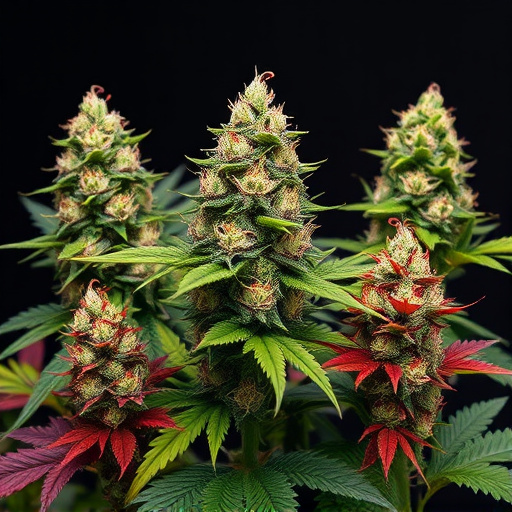
Cannabis’ ability to stimulate appetite is well-documented, and this effect is largely attributed to the presence of tetrahydrocannabinol (THC), the primary psychoactive compound in the plant. THC interacts with the endocannabinoid system (ECS), a complex signaling network within our bodies that regulates various physiological processes, including hunger and metabolism. When THC binds to receptors in the ECS, it can trigger a cascade of events leading to increased hunger sensations.
Different cannabis strains vary in their THC content and cannabinoid profile, which influences the strength and nature of the hunger-inducing effect. Some strains with higher THC levels may produce a more pronounced appetite surge, while others with balanced or low THC might have milder effects. Additionally, the combination of THC with other cannabinoids and terpenes can modulate how an individual responds to cannabis consumption in terms of their appetite.
Different Cannabis Strains and Their Unique Effects on Appetite

Cannabis users often experience increased appetite, known as “the munchies,” but this effect can vary greatly depending on the specific strain they consume. Different cannabis strains possess distinct chemical profiles, with unique ratios of THC (tetrahydrocannabinol) and CBD (cannabidiol), among other cannabinoids. These chemical differences directly influence how each strain interacts with our bodies and brains, including effects on appetite regulation.
For instance, strains high in THC tend to stimulate appetite more strongly than those with higher CBD content. This is because THC binds to CB1 receptors in the brain, which are heavily involved in controlling hunger and pleasure. Conversely, CBD has been shown to potentially suppress appetite by interacting with other receptors and neurotransmitters involved in food intake regulation. Thus, choosing a strain with a balanced THC:CBD ratio can offer users a more nuanced experience, allowing them to enjoy increased appetite without overeating.
Exploring the Science Behind Cannabis' Influence on Eating Behavior and Potential Health Implications
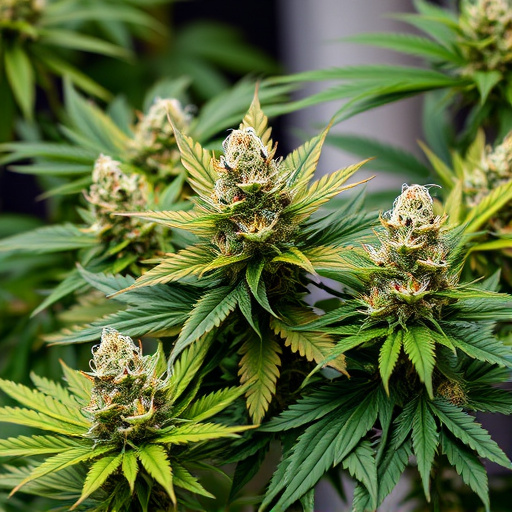
The science behind cannabis’ influence on eating behavior is a fascinating and evolving field of study. Research suggests that the active compounds in cannabis, particularly tetrahydrocannabinol (THC) and cannabidiol (CBD), interact with the endocannabinoid system in our bodies, which plays a key role in regulating appetite and metabolism. When consumed, these compounds can bind to cannabinoid receptors in the brain, leading to changes in hunger cues and food cravings. This is why many users report increased appetites after consuming different cannabis strains.
While this effect is often enjoyed for its potential to stimulate eating and alleviate weight-related issues in certain medical conditions, it’s important to note that not all strains of cannabis have the same impact. The specific cannabinoid profile and terpene content of each strain can significantly influence its effects on eating behavior. For example, high CBD strains may produce milder hunger-stimulating effects compared to those with higher THC concentrations. Understanding these variations can help users make informed choices based on their needs and preferences, ensuring a more controlled experience.
Cannabis’ effect on appetite is a complex interplay between various compounds, notably THC and the endocannabinoid system. Different cannabis strains, each with unique THC levels and terpene profiles, offer distinct experiences regarding hunger stimulation. While scientific research continues to explore the full scope of these effects, understanding these mechanisms can help users make informed choices about their consumption. The potential health implications are equally fascinating, suggesting that cannabis may play a role in managing eating disorders and related conditions in the future.


